- News
- Reviews
- Bikes
- Accessories
- Accessories - misc
- Computer mounts
- Bags
- Bar ends
- Bike bags & cases
- Bottle cages
- Bottles
- Cameras
- Car racks
- Child seats
- Computers
- Glasses
- GPS units
- Helmets
- Lights - front
- Lights - rear
- Lights - sets
- Locks
- Mirrors
- Mudguards
- Racks
- Pumps & CO2 inflators
- Puncture kits
- Reflectives
- Smart watches
- Stands and racks
- Trailers
- Clothing
- Components
- Bar tape & grips
- Bottom brackets
- Brake & gear cables
- Brake & STI levers
- Brake pads & spares
- Brakes
- Cassettes & freewheels
- Chains
- Chainsets & chainrings
- Derailleurs - front
- Derailleurs - rear
- Forks
- Gear levers & shifters
- Groupsets
- Handlebars & extensions
- Headsets
- Hubs
- Inner tubes
- Pedals
- Quick releases & skewers
- Saddles
- Seatposts
- Stems
- Wheels
- Tyres
- Health, fitness and nutrition
- Tools and workshop
- Miscellaneous
- Buyers Guides
- Features
- Forum
- Recommends
- Podcast
TECH NEWS
Second look: Eastway 2013 range (the production version)
It's almost a year since we got our first look at the working prototypes of new British bike brand's Eastway's first range and now they're back with the final production range of bikes, time to take a second look. Yesterday we nipped down to Fisher Outdoor Leisure’s (who also distribute Look, Tacx and SRAM amongst others) annual press and trade show to take a gander Eastway's new range of 13 bikes for 2013.
Eastway is Fisher's new in-house brand and like similar ventures from other British distributors aims to deliver well priced, well specced bikes across a variety of riding styles but all designed with British conditions in mind. Prices range from £599 to £1999, with bikes covering road, city and cyclocross. The brand owes its name to the old Eastway cycle circuit that was bulldozed to make way for the Olympic village, it's certainly a name that will hae resonance with a couple of generations of riders from London and beyond who raced there. In fact, Matthew Pryke, one of the two key people responsible for developing the brand, tells us they used to race at the circuit and when the idea for developing their own line of bikes came about, the name felt a natural fit.
For many looking at the new line-up the standout feature on many of the higher end bikes is the fact they come disc brake equipped (something we couldn't help notiice last year too). The chaps at Eastway are fully convinced of the advantages of disc brakes on bikes at this price and style - bikes for speed, distance and comfort but not necessarily racing (definitely not anything UCI sanctioned anyway), so they aren’t too concerned with whether the the pro peloton adopt them or the UCI’s postion is. Which leaves them free to innovate their bikes in the direction they feel is right for the customers they have in mind for these bikes.
For the road
There are seven drop-bar road bikes in the range, starting with the £749 TR1.0 singlespeed/fixed wheel bike, and rising to the £1,999 disc-equipped RD1.0. This is Eastway's range-topper a carbon road bike designed with disc brakes in mind and even a year since we first saw the RD1.0 that's still a very rare thing.
The frame has an oversized down tube and tapered head tube with internal cable routings - it’s fully Di2 compatible so there's plenty of opportunity for upgrading in the future - with the rear disc cable routed along the top of the top tube. We should also give a mention to the fork which is one of the new generation of full carbon disc equipped road forks.
The frame has plenty of extra carbon in the seat and chainstays to ensure it can withstand the forces produced by disc brakes. In testing Eastway say it easily surpassed the highest possible level of forces, far exceeding anything a rider could put into the frame. They’ll be offering four sizes of frame, from 52 to 58cm.
A full SRAM Force groupset with a compact SRAM non-series chainset is built onto the frame. The mechanical disc brakes are…? Well the the brakes on the bikes we saw looked like the standard Avid BB7 Road SLs to us, the Eastway website has them down as both: BB7s in the bike description and BB9s on the spec sheet. The BB9 is a much rumoured brake which as yet hasn't broken cover (everyone hoped last year's BB7 SL would be it) although SRAM's next big product launch is only a matter of weeks away, so maybe the chaps at Fishers (who distribute SRAM in the UK) know something we don't. Either way, the BB7 SLs are the cream of road mechanical discs at the moment.
Eastway have designed their own wheels, with a 32mm aluminium clincher wheel. They wanted the wheels to be stiff and tough, hence the fitting of the reasonably deep-section rims, and the hubs are their own design too. All Eastway bikes have Kenda tyres and Eastway’s own handlebars, stems and seatposts.
Sitting below the RD1.0 in the Eastway road range are two carbon bikes with regular caliper brakes and two alloy bikes. There’s also a steel touring bike, the ST1.0 at £999.
The R1.0 (above) costs £1,849 and the R2.0 is £1,499. They both share a carbon fibre frame that is very similar to the RD1.0, but obviously lacks the mounts for disc brakes. All cables are cleanly routed internally, including the rear brake (it isn’t on the RD1.0) with a similarly tapered head tube, chunky down tube and skinny seat stays.
The R1.0 is specced with SRAM Rival and the R2.0 (which with its orange on black looks fantastic) gets SRAM Apex.
Meanwhile, the R3.0, which hits the magic £999 cycle to work scheme price point, and the £799 R4.0, both share the same double butted aluminium frame. It’s a very advanced aluminium frame that is made in the same factory as a certain giant manufacturer, so we know it’s a good ‘un. The R3.0 gets a carbon fork with a full SRAM Apex build and Eastway’s E28 rims
The R4.0 makes do with an alloy fork and has a SRAM Apex groupset with Eastway E24 wheels.
Both frames have mounts for mudguards and a rack which gives them the versatility the designers knew was at the heart of the brands appeal.
Eastway found room in the range for the traditional looking ST1.0, a lovely Reynolds 520 frameset with a classic styling and braze ons for mudguards and racks and space for fat tyres. It was on show with cantilever brakes, but they’ll be adding a calliper model and even a disc-equipped version in the future. Eastway describe it as both a road bike and a tourer, the ST officially stands for 'Steel Tour' but last year we heard the prototype referred to as 'street tour' and 'street trail' basically it's a bike designed to tackle a variety of terrains and a variety of types of riding - which is probably best summed up in the phrase du jour - do-it-all bike. Essentially they've designed a very versatile steel bike in the mould of the sorts of thing we've seen from the likes of Salsa, All City, and Surly and closer to home, and perhaps a touch less retro-styled, Cotic with their Roadrat. It'll be interesting to see whether they also offer a frameset option that would give the most opportunity for buyers to make the most of the various things you could do with it - there was some talk of that at the prototype stage, but as yet there's no frameset option on the website.
That one sounds very interesting. discs on a vintage looking steel tourer? Yes please. The complete bikes comes a SRAM Apex groupset, Tektro CR170 brakes and Eastway E28 wheels.
Reynolds 520 tubeset should give a comfy ride aided by those fat tyres there's no mention of the frame being double butted (it is butted) and no mention of weights either so don't expect feathery lightness, but that's not what this type of bike is about. Price for the complete bike is a cycle to work scheme friendly £999 - a tad up on the £850ish that was being talked about at the prototype stage, but then it was a prototype and that price looks pretty attractive compared with similar types of bike
And this is the fixed wheel/singlepseed TR1.0. An aluminium frame with a carbon fork costing £749 and built for track or street.
For the city
Where the Eastway range has really developed in the 12 months since we first saw the new bikes is in the range dubbed ‘Sports Hybrid’. These flat-barred 700c road bikes are designed for the commuting to the office or university, and they each come fitted with disc brakes. You get the sense, talking to Matt, that these are the key bikes in the range, and ranging in price from £599 to £1,249, you get the sense these are the bikes that should fly off the shelves.
The most expensive offering is the £1,249 FB1.0, which uses the same aluminium frame that is shared down to the entry-level model in the lineup. The FB1.0 gets a good looking carbon fibre fork, SRAM Rival groupset and Avid Elixir 5 hydraulic disc brakes taken right from SRAM’s mountain bike product catalogue.
Like the road bikes, the FB1.0 and all the flat-barred models are fitted with Eastway’s own handlebars, stems, seatposts, saddles and even the wheels. These are the E28 wheels, with a 28mm deep rim.
The FB2.0, which also shares the same orange/black colour scheme as the R2.0 (which is a deliberate move - they wanted to offer ‘pairs’ of bikes, so each drop-bar road bike has a flat-bar partner, if in colour scheme only and not pricing). It has a SRAM Apex groupset, Avid Elixir 3 hydraulic brakes and a carbon bladed fork.
At £749 the FB3.0 drops the carbon fork and replaces it with an alloy one and the drivetrain is mainly with SRAM Apex while Avid Elixir 1 hydraulic disc brakes take care of stopping and Eastway E22 wheels do the going.
And at £599 the FB4.0 is Eastway’s most affordable offering. An aluminium frame and fork and a mountain bike SRAM X5 2x10 groupset and Avid BB5 mechanical disc brakes and Eastway E22 rims complete a fine looking package.
For the trail
Finally, Eastway also cater for cyclocross with two models, the all-carbon CX1.0 at £1,999 and the £1,249 CX2.0 with an aluminium frame.
The carbon CX1.0 hasn’t changed much from when we first sighted it a year ago really, as it was mostly ready to ship then. The frame is their own design and features internal cable routing, a tapered head tube and stacks of clearance for wide ‘cross tyres and mud to spatter between frame and wheels.
A race-ready specification includes a SRAM Rival groupset with 46/38 chainrings and Avid BB7 mechanical brakes.
Their own E32 rims are laced to their own disc hubs and tyres are Kenda K1080 35mm.
New though is the CX1.0, an aluminium version of the carbon ‘crosser. It’s been given a slightly slacker geometry, as they expect this model to appeal to those people looking for a versatile do-everything bike as much as those wanting to get into ‘cross racing.
The aluminium frame with internal cable routing is paired with a carbon fork and Avid BB5 disc brakes and a SRAM Apex goupset, with a compact 50/34 chainset.
So, a good look at one of the newest British brands, and we’d argue one of the most exciting at the moment. Not only are they very well-priced, but there’s a strong argument for disc brakes right across the range. Here’s a good video the Eastway guys put together that is worth a watch.
The Eastway bikes are just about available and will be hitting shops in the next couple of weeks. Check out their website for more info www.eastwaybikes.com
David worked on the road.cc tech team from 2012-2020. Previously he was editor of Bikemagic.com and before that staff writer at RCUK. He's a seasoned cyclist of all disciplines, from road to mountain biking, touring to cyclo-cross, he only wishes he had time to ride them all. He's mildly competitive, though he'll never admit it, and is a frequent road racer but is too lazy to do really well. He currently resides in the Cotswolds, and you can now find him over on his own YouTube channel David Arthur - Just Ride Bikes.
Latest Comments
- chrisonabike 10 min 5 sec ago
Perhaps some of the difficulty here is in the language - what we're comparing with what?...
- stonojnr 14 min 23 sec ago
We're decades behind in the UK of being able to do this, Utrecht works because the Dutch prioritised safe cycling infra, which makes convenient...
- eburtthebike 18 min 28 sec ago
Motonormativity. You can't make things safe for pedestrians and cyclists if it inconveniences drivers, even by the tiniest amount: they're just...
- Andrewbanshee 23 min 4 sec ago
I experience this quite often when out running. I follow the guidelines, running towards traffic and keep hard right. I am very visible too but...
- mctrials23 37 min 4 sec ago
Not enough to warrant having the role exist at all would be my guess.
- Secret_squirrel 44 min 38 sec ago
Seems expensive for what it is. ...
- JMcL_Ireland 1 hour 11 min ago
Regarding fit, from my experience shoes seem to follow the same nonsense in sizing as a "race" cut clothing - I generally have to upsize one or two...
- brooksby 1 hour 30 min ago
Except you'll probably find that the factory selling it on Aliexpress are managing that low price by "borrowing" the original design without credit...
- stonojnr 3 hours 4 min ago
It can be 50/50 whether the articles are paywalled or not, even one that looks free can disappear, but you can switch between the EADT &...











































































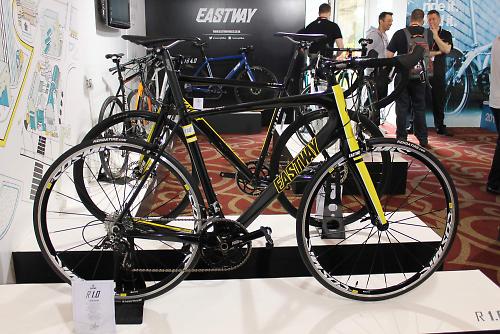


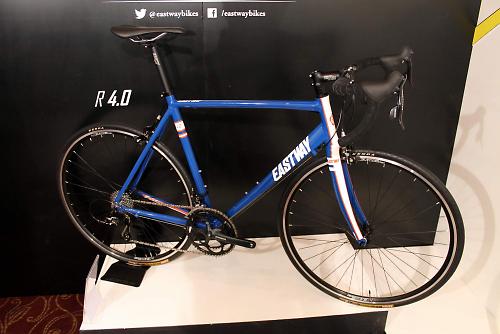

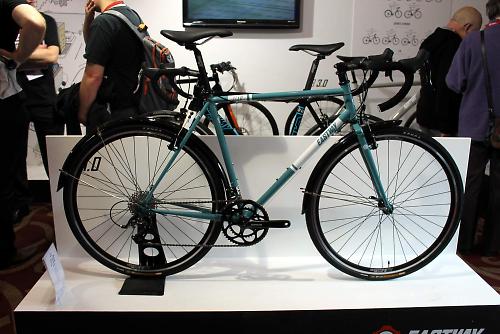




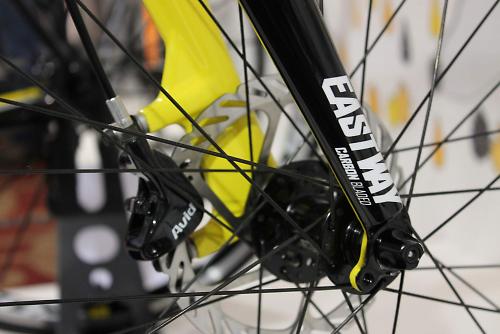
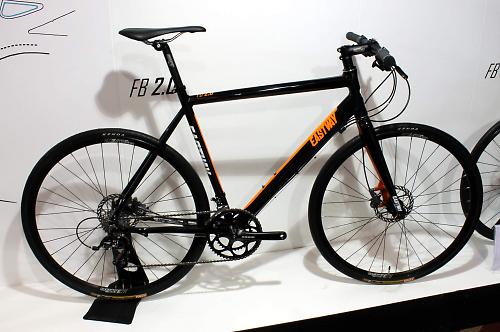
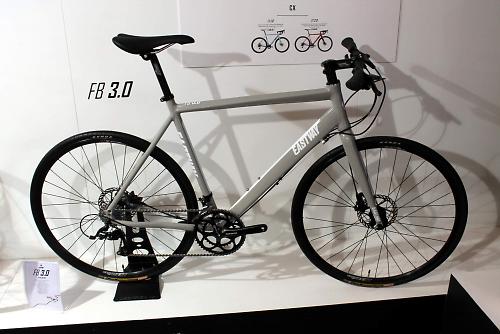
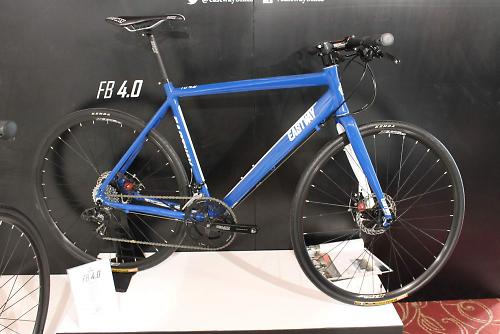
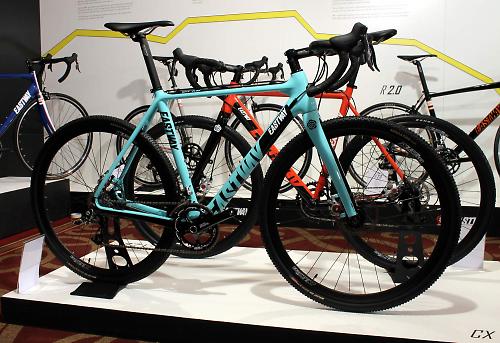




Add new comment
10 comments
Some of these are pretty - but the single speed is f-ugly. Looks like something from Scott Pilgrim, or the Powerpuff Girls.
Thanks Dave and BigDummy, its nice to hear some first hand experience on this, the internet rumour mill has not been overly positive about discs. Still though, I doubt I'll have a road bike with them on anytime soon, I cant really come to terms with the aesthetics.
discs: i've got a trek crossrip on test at the moment with a 140mm disc on the rear (Hayes CX-5) and i've been doing my best to cook it, dragging it down mile-long descents and then hauling it on at the bottom (I'm 100kg). granted you can make it fade a bit, but to be honest it's pretty good. Given that it's paired with a 160mm at the front it's hard to see how you'd run out of brakes, especially if you weren't deliberately trying to. I've had similar experiences with other mechanical systems on the road too. Not all of them are great, but the good ones are, well, good. and brake fade doesn't tend to be the issue with the bad ones, it's more about lack of overall power and modulation.
That SS looks nice. The straight blade forks look similar to my 1st generation Langster.
I wasn't overly impressed with the R1.0 to be honest, the ride was a bit wobbly at high speeds. Not the lightest and the build kit (stem, bars etc.) was poor, but the SRAM Rival that was fitted to it was nice!
Not to be completely negative however, the geometry was fairly nice for general riding, but by all means, nothing but a casual bike.
For the same money I'd definitely get something else.
They straight lied when they said the CX1.0 is their own design. I've been riding an unbranded version of that moulding for 6 months bought direct from China. Fisher also sell Fugi bikes, and they too share an identical frame design.
This honestly isn't going to be a very exciting issue I don't think. I ride mountain bikes, not especially well and with the excessive braking that comes from not being especially good.
A modern hydraulic system will cope adequately with me riding raggedly down the Megavalanche enduro course over about 1hr 30 minutes while losing 2000 metres of vertical height - using 180mm rotors. Feel starts to get a little poor after prolonged, hard braking. The brake feels a bit "wooden", modulation suffers a bit. It still works. And compared to the effects of arm-pump and your hands cramping up I'm not sure it's the main problem.
I am absolutely confident that I brake much less frequently while descending on the road, and much less hard. Going to tiny rotors is probably not the cleverest plan, apart from that it's certainly not somethig that puts me off given what I know about mtb brakes.
I've no doubt it'll be possible to cook these systems a bit. But it's also possible to blow your tyres by over-heating the rims if you really try. If you ride normally they'll just work.
Anyhoo, not going to go into the trenches on it, no-one needs disc brakes on a road bike - that certainly seems to be true.
Do any of these guys have anything to say about how these disced road bikes should be used on long descents? Was there any mention of brake fade and overheat?
'Reynolds 520 tubeset should give a comfy ride aided by those fat tyres there's not mention of the frame being butted' - other than the sticker on the frame, you mean?
The RD1.0 will be my "review to look out for" for 2013 personally. That looks spot-on.